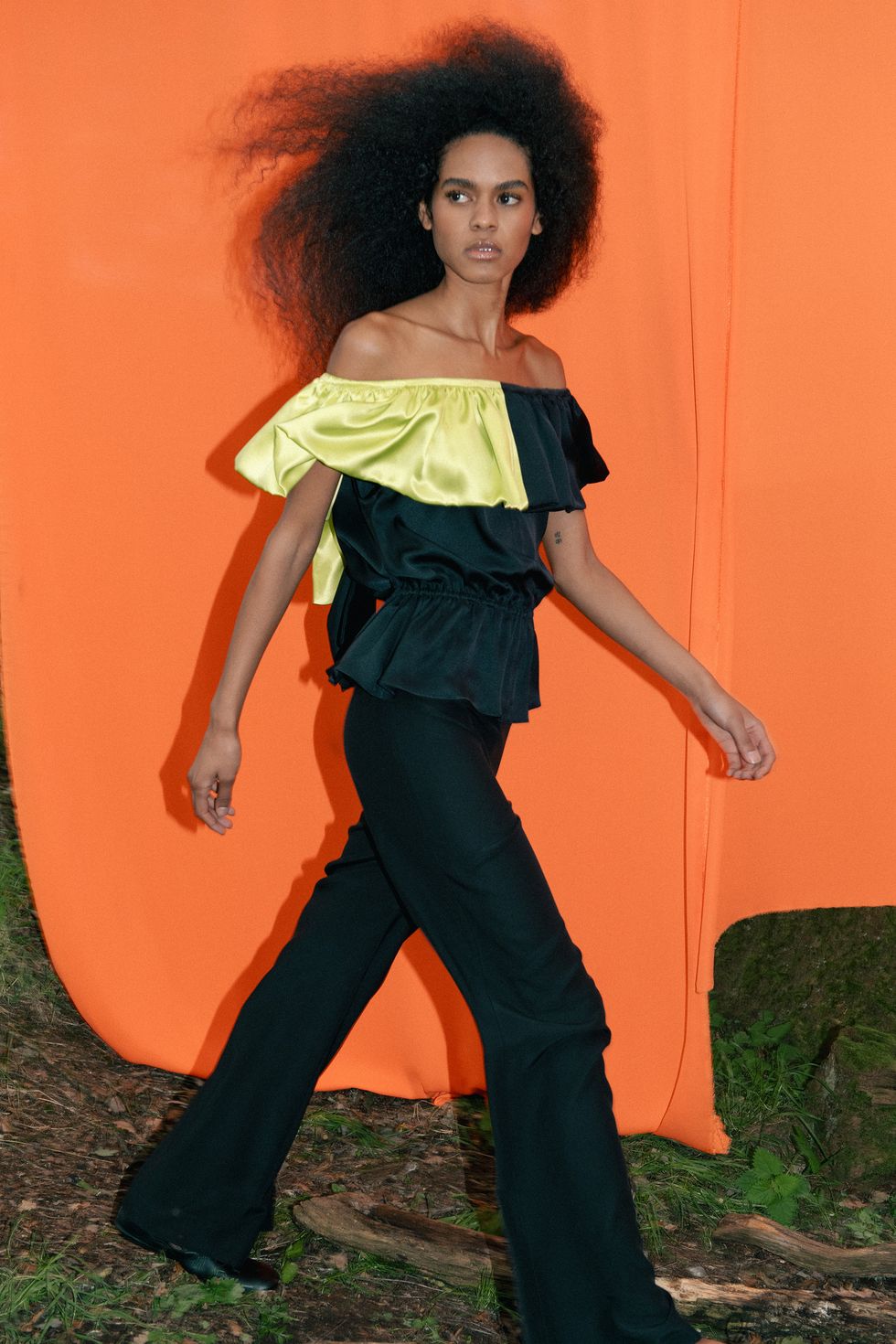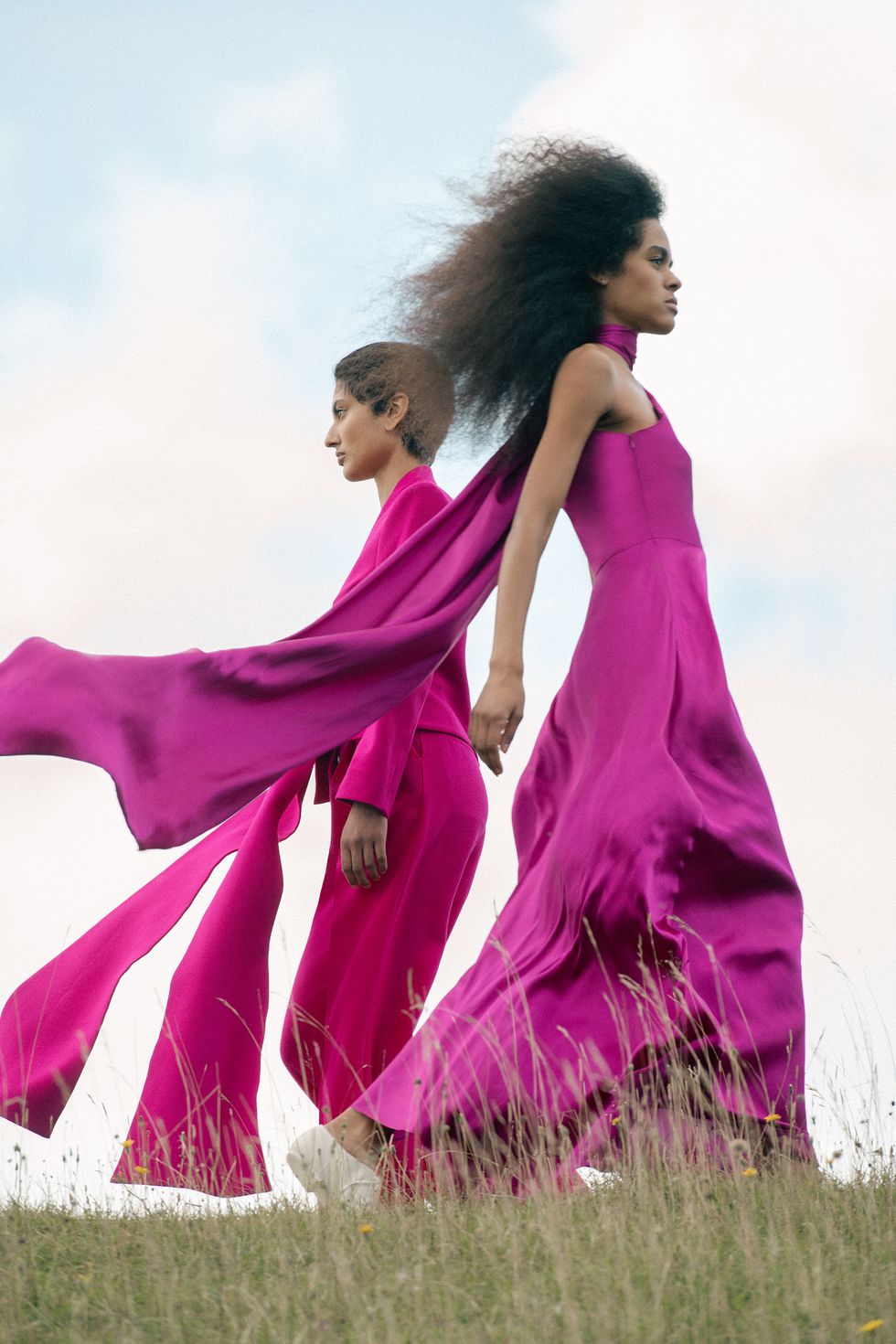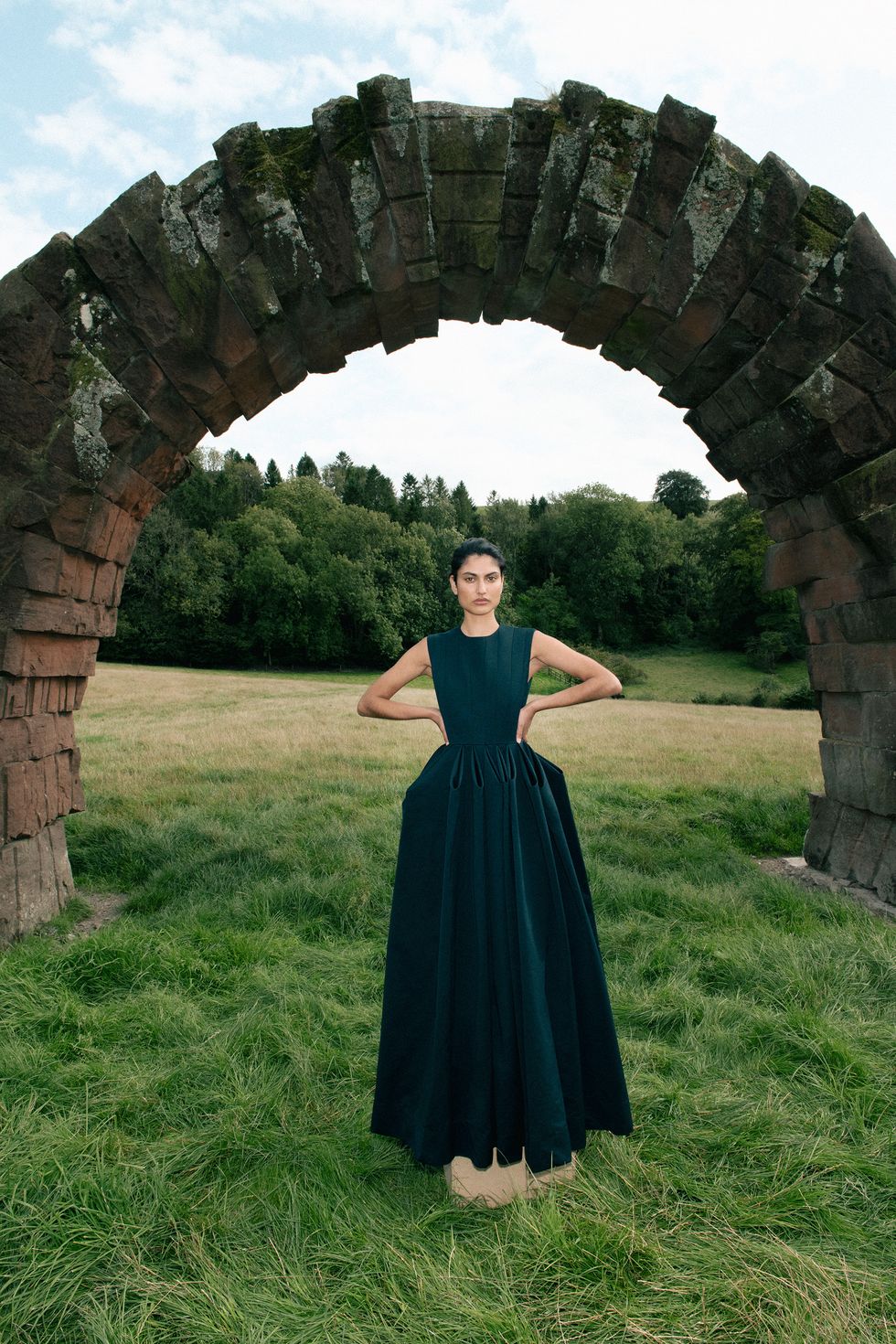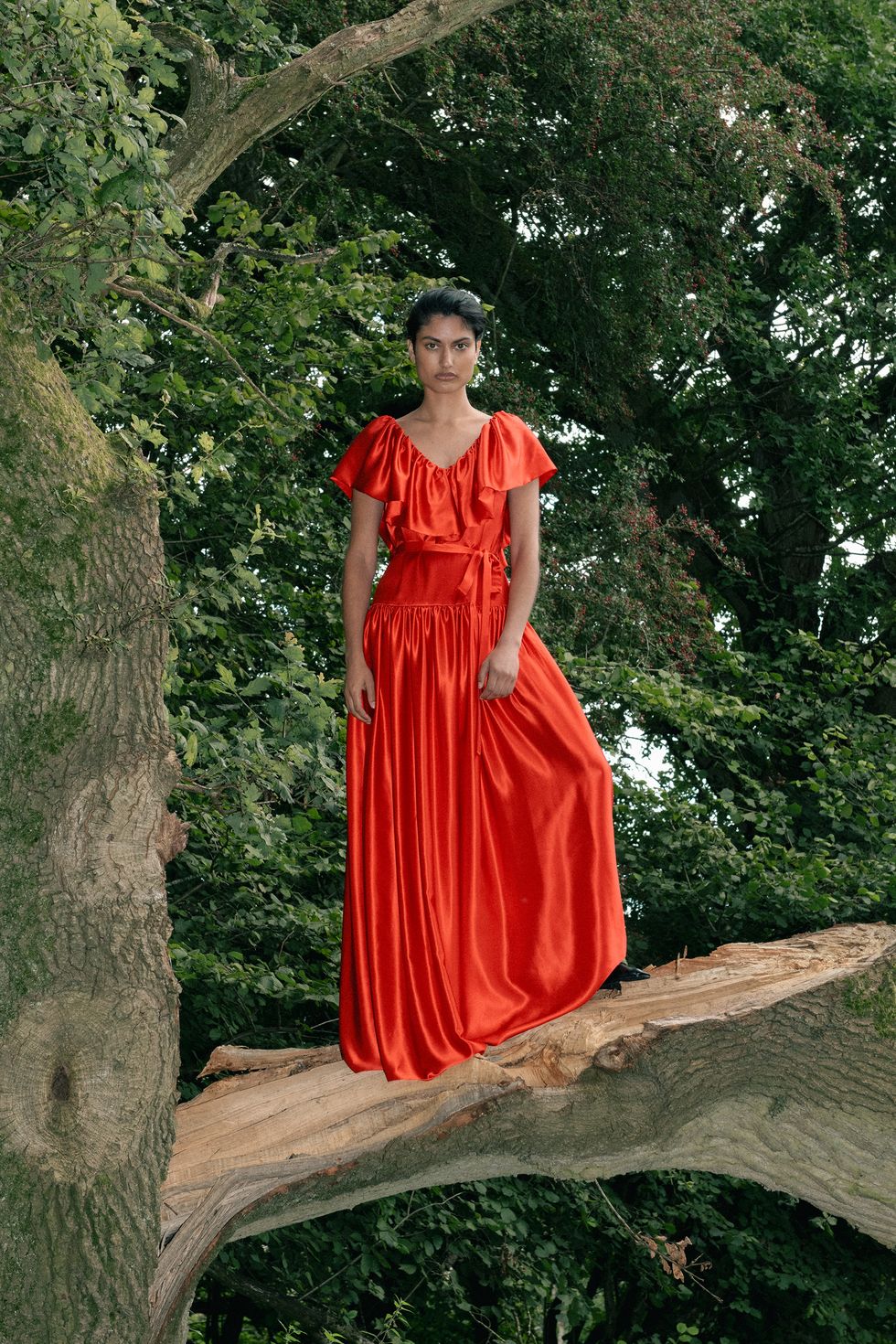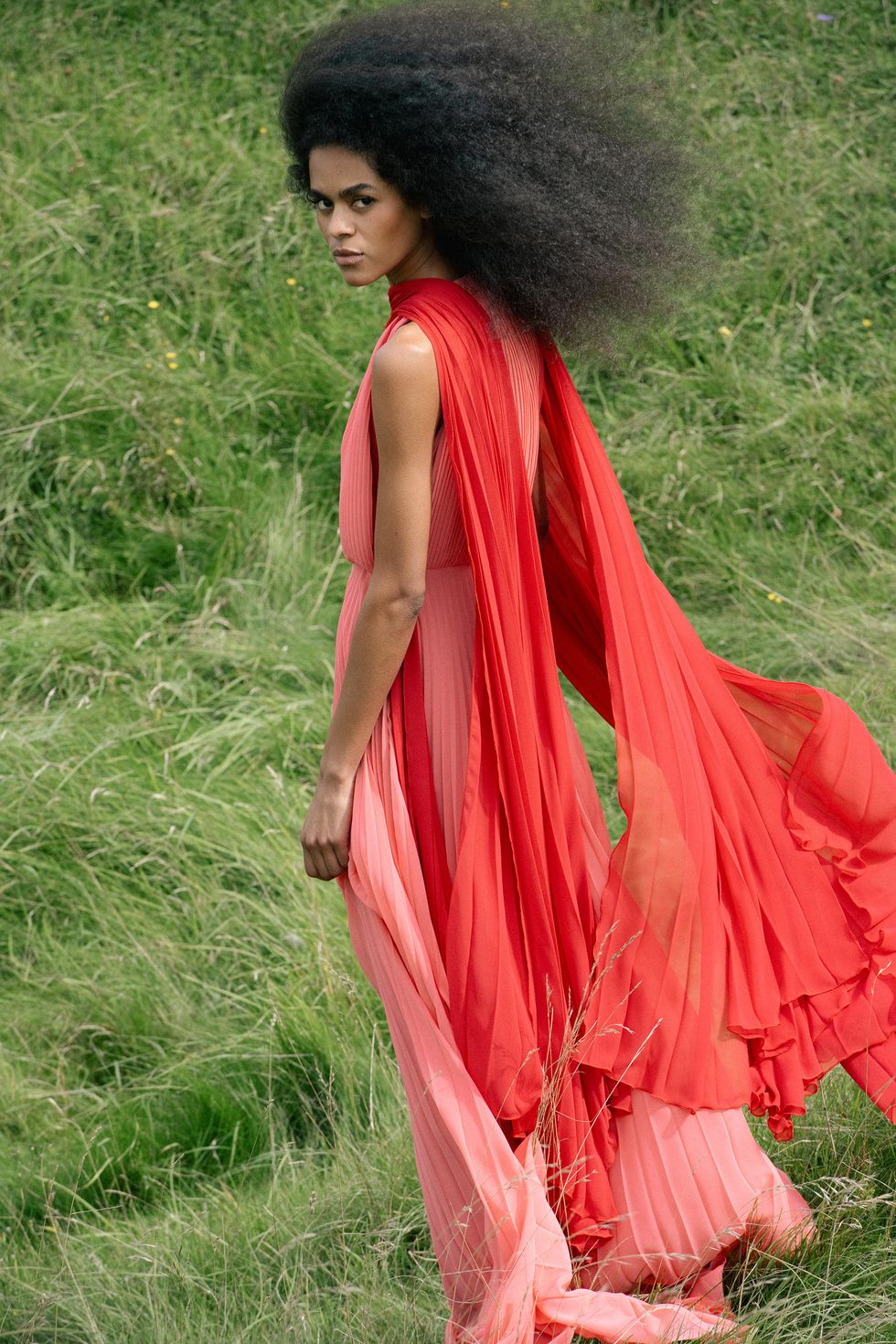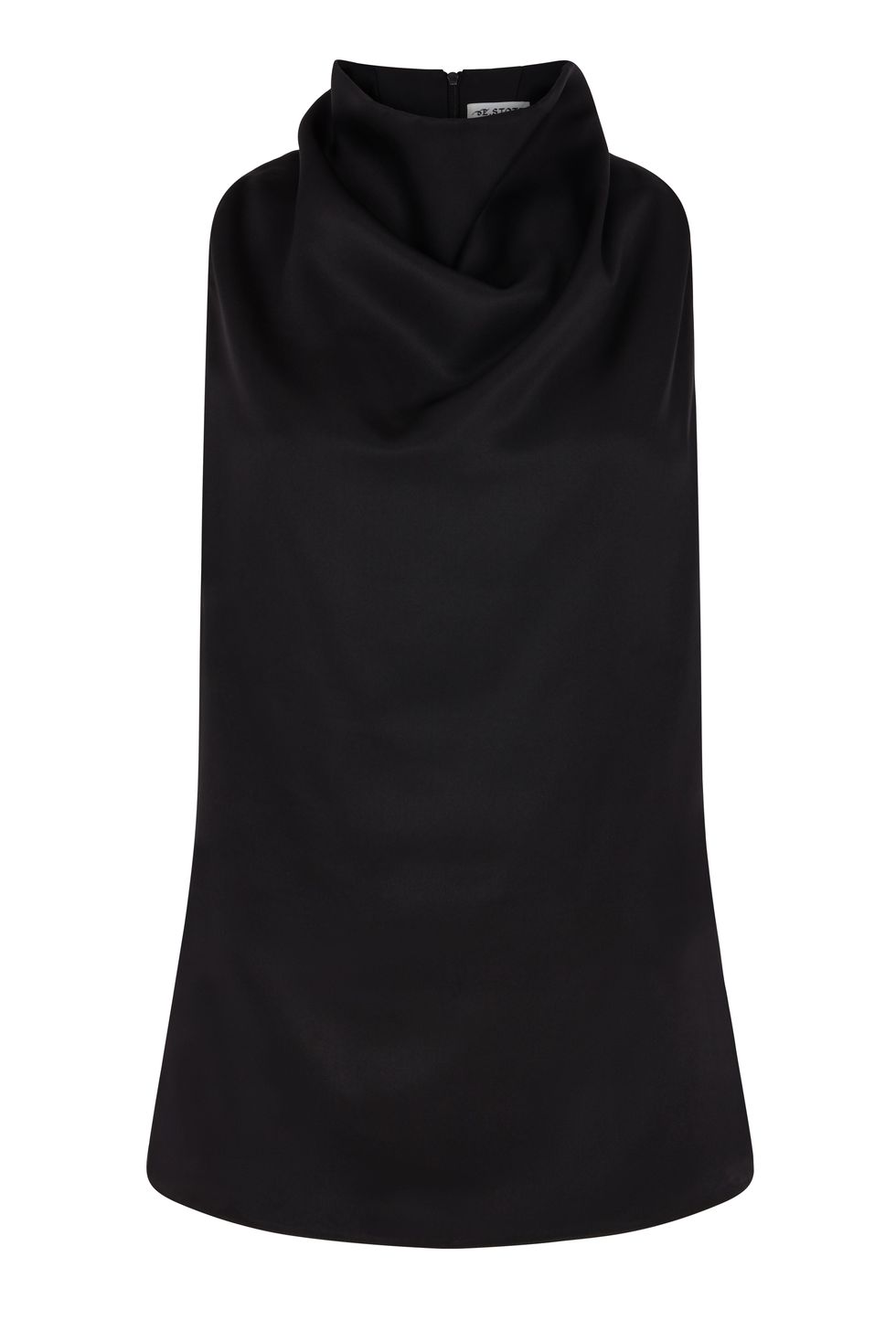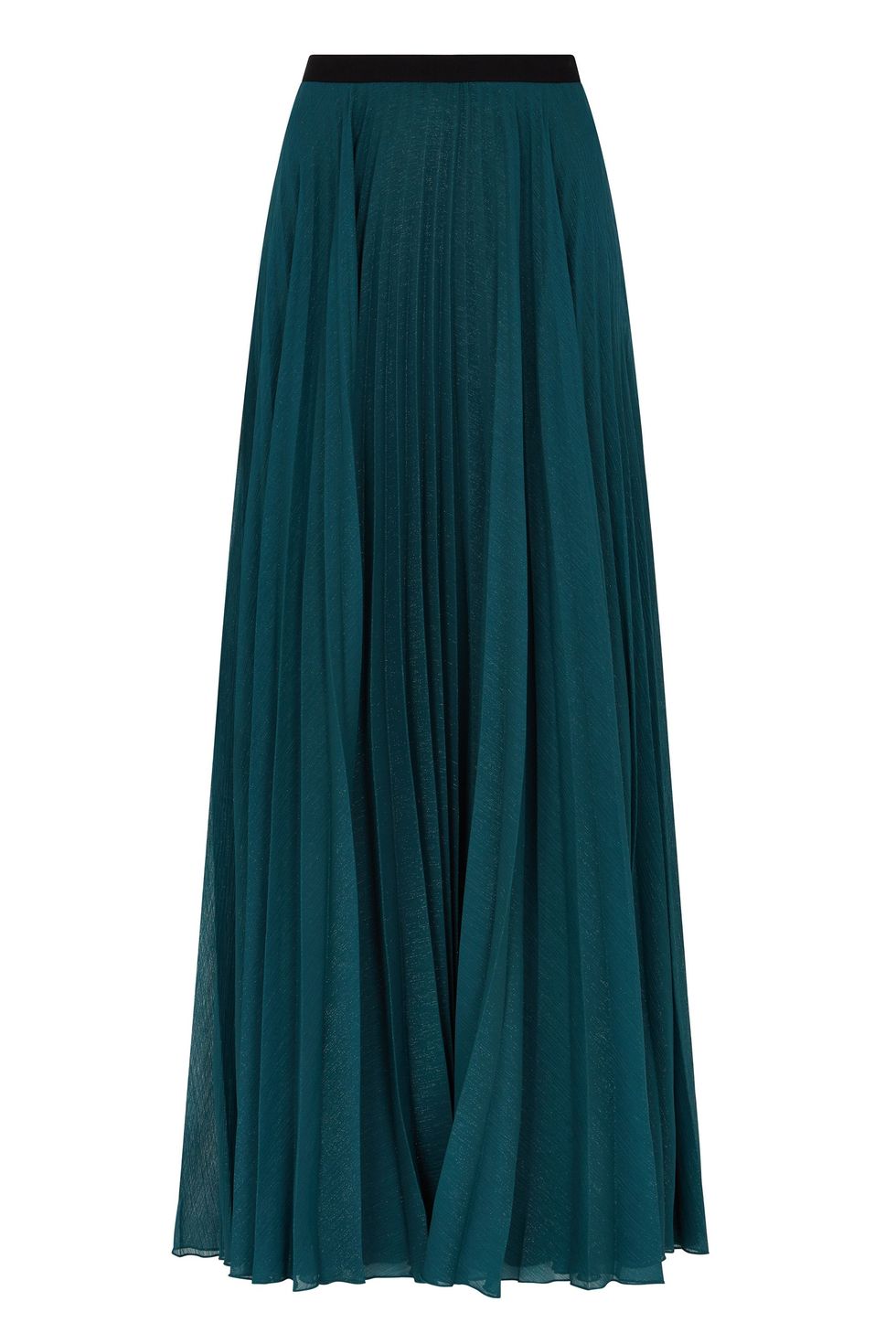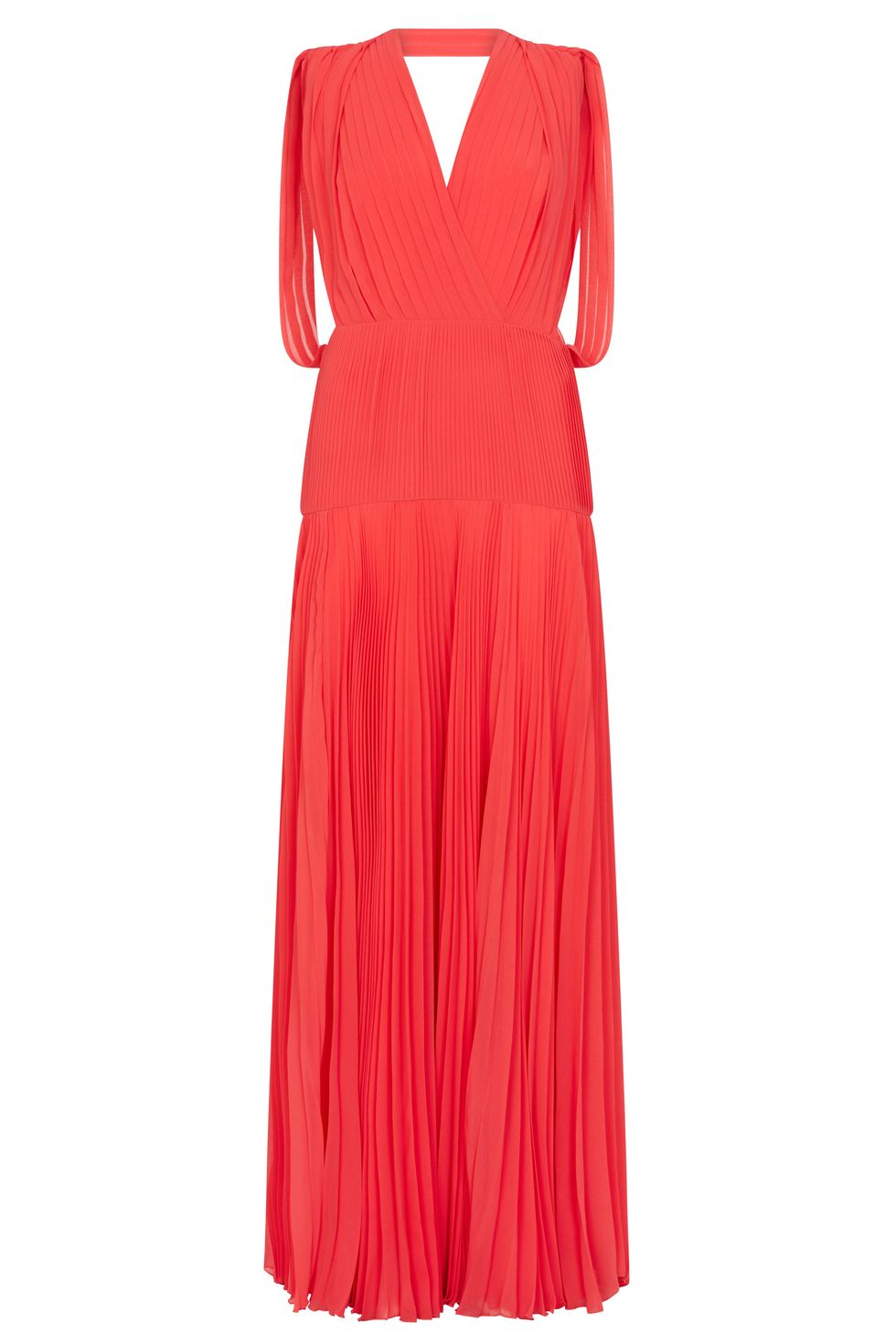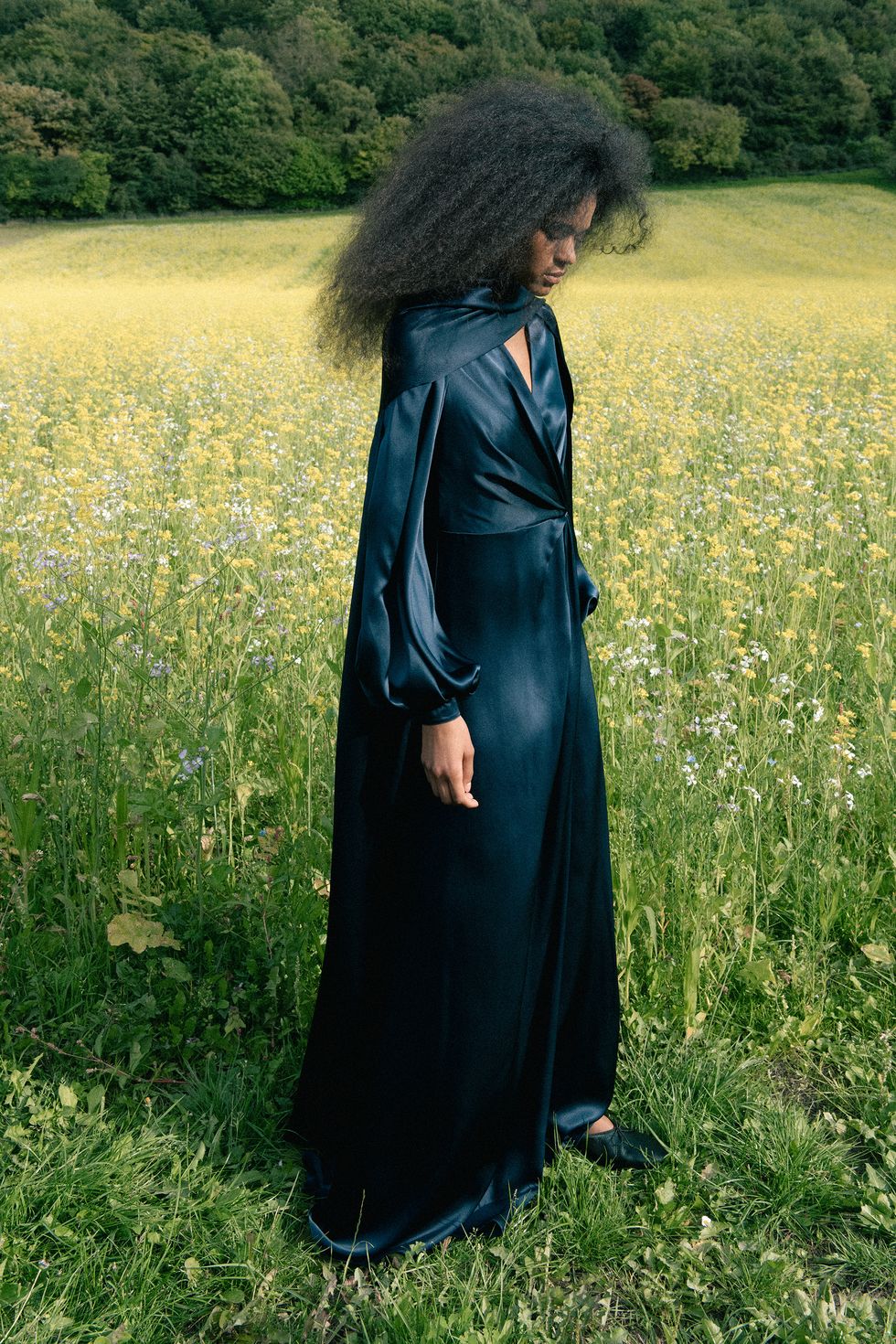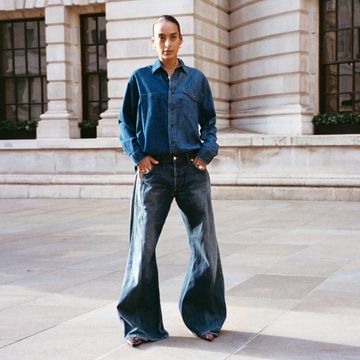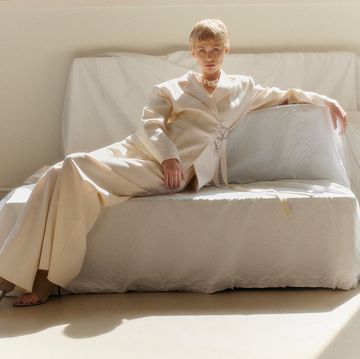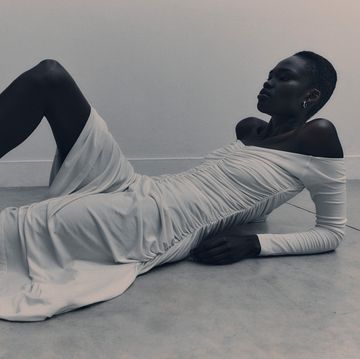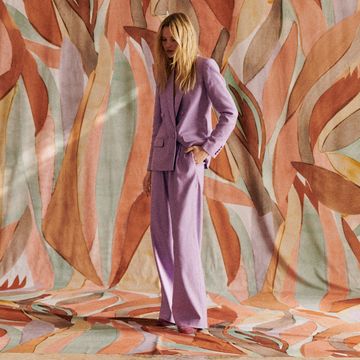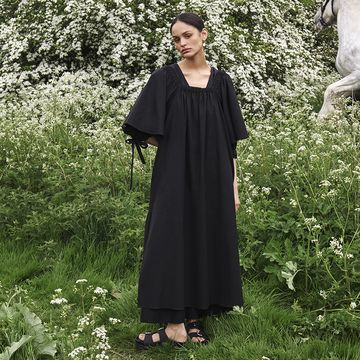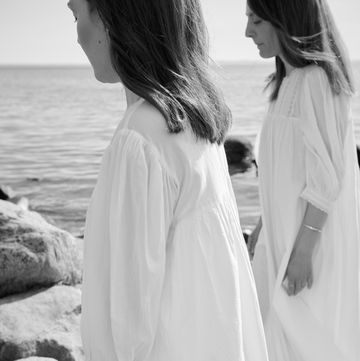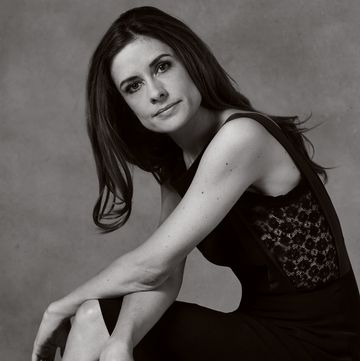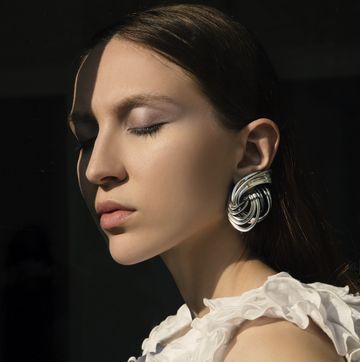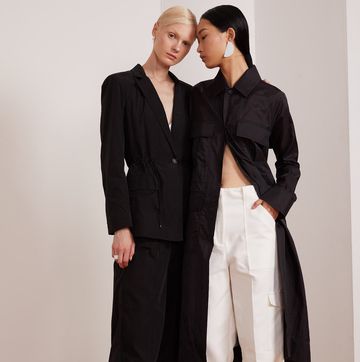When it comes to sustainable fashion, it can be hard to know where to start. To help, every month we focus on a brand that knows exactly what it means to be a responsible force for good in fashion today.
This month we’re getting to know E.Stott, a label that champions a 'piece-by-piece' approach to dressing, allowing customers to adapt their purchases for different occasions and creating an alternative way to building a sustainable wardrobe.
During party season, prioritising both style and sustainability can be a tricky balance to strike. While we still want to approach shopping consciously, we also want to look and feel good during the festivities – which can often mean treating ourselves to something new.
While, of course, there's always rental, there are also dedicated occasionwear designers that promise the best of both worlds. The London-based label E.Stott has a particularly refreshing approach to dressing, offering the ability to create multiple outfits from one purchase – through removable sleeves, skirts and belts.
"Occasionwear is often the worst from a sustainability point of view, as it encourages single-use garments made from harmful fabrics," says E.Stott's designer Elizabeth Hiscox. "I wanted to offer quality garments that can be used more... I would like to encourage our customers to rethink the ownership of their garments and be guardians of their products so they will be passed on."
Hiscox, who launched her first E.Stott collection in February this year, uses end-of-line materials to create her designs. Her work quickly caught the attention of the luxury retail industry, with Matches Fashion and Harrods now stocking her label.
Here, Bazaar talks with Hiscox about what she's learnt since starting her label, what she hopes for the industry at large, and why rethinking ownership of our wardrobes is key.
What makes a truly sustainable brand?
"A truly sustainable brand would probably have to have net-zero carbon emissions – including their supply chain – with minimal offsetting, zero pollution, zero waste, a positive impact on the wider industry and consumer trends, and excellent well-being for their employees. I don’t know of anyone who has managed all that yet! But I am truly hopeful for the future. There are lots of brands approaching the sustainability question from different angles; we are all learning, and in a sustainable future, we will combine our learnings and create a sustainable model for our industry. At E.Stott, we are approaching sustainability at every stage – from the design process through to production – with a focus on how the consumer uses our clothes."
Why is the ‘piece-by-piece’ approach to shopping good for the planet?
"Having a sustainable wardrobe is as much about how you wear it, as what you own. Making and selling clothes has a carbon impact. Using less is better for the environment and so one of the key principles behind E.Stott is to make garments that can be worn in different ways and paired with different items. Outfits are created piece-by-piece, through additions of sleeves or belts, and you craft your own collection to adapt to your needs.
"The versatility of our garments extends their useful life and reduces their environmental impact. And it’s fun to give the wearer more creative freedom! Sometimes it’s hard to tangibly see how your purchasing decisions make a difference. Take ownership of the environmental impact of your wardrobe and adapt something you already own."
How can we approach partywear dressing in a greener way?
"For my sister's traditional countryside wedding, she wore the first edition of the ivory silk satin Esme sleeve scarf (over her dress) for the church ceremony, with an additional exaggerated organza train. Immediately after the ceremony, for the garden party, she removed the train; then later, for the evening reception, she removed the sleeves. The sleeves were then passed to another friend for a city registry wedding, and she wore them over our Lyra Dress – the same dress she now wears to work at her high-intensity corporate job in the city. For me, this is the perfect example of how you can do more with less.
"This is the exact reason I started E.Stott. To try and reframe occasion dressing by looking at alternative ways that garments could be more sustainable. I wanted to offer quality garments that can be used more."
What do you think needs to change in the fashion industry?
"From a production point of view, I would love to see a shift in the fabric industry to reduce blended fabrics that are hard to recycle. At E.Stott, we champion using either end-of-line waste, or easy-to-recycle fabric. Mono fibres are going to be key going forward. Watch this space."
What do you want to achieve personally with your brand, in terms of sustainability?
"I would like to have a wider cultural impact on the industry. If some of my business practices can make even one other brand question the decisions they make, then I will feel I have achieved something."
What advice would you give to those wanting to make their business sustainable?
"To make your own brand more sustainable, I would say you need to consider sustainability at every stage – all the small changes add up to something bigger. But to create a larger impact on our industry, I would advocate choosing one thing that you believe will make a difference, and relentlessly pursuing that thing and shouting about it. The signalling effect from demonstrating a better way will multiply your impact. For us, it’s about producing garments that can be used and combined in different ways, thereby increasing their use and reducing their environmental impact."
What’s the smallest change a consumer could make to become more eco-conscious?
"Reimagining their ownership of a garment. E.Stott promotes that you shouldn’t believe that you have ownership of products – consider it more like guardianship of someone else’s belongings. Look after it. Pass it on when you have finished with it. Buy less, buy better and make it last.
"I like to remind myself of this quote from Orsola De Castro's book, Loved Clothes Last: 'Clothes touch us all. We may not be interested in fashion but we can’t avoid getting dressed, which means every time we gaze into our wardrobes wondering what to wear, we could be making a choice that has a positive or negative impact.'"
What are some of the most common inaccurate “facts” about sustainability you see promoted?
"Sustainability is a very big, sometimes very sensitive, and often very complicated topic. Consumers are becoming more aware of greenwashing, which is a great step forward. Holding companies accountable will encourage true change.
"But as a small brand, it’s often hard to know what to do, what to believe, and whether your logic is accurate. At E.Stott we make clothes and so we have a carbon footprint, but we believe our footprint is lower than others, and we strive to drive change. Does that make us truly sustainable? Technically not until we have a net-zero carbon footprint, but we are trying."
What’s the biggest misconception about sustainable clothing and what would you say to counteract this?
"That sustainable merit is solely based on the fabric of the item. Lots of garments use recycled materials, but these often still have a large carbon footprint or are blended and not easy to recycle, so they break the recycling life cycle.
"At E.Stott we use a lot of end-of-line fabric. This is fabric that is discarded by larger brands and destined for waste, but is perfectly usable and often extremely high quality. By using this, we drastically reduce our carbon footprint. It does however add constraints to our design process, as we typically have to search out and find the fabric before we design the garments; we don’t have the luxury of choosing fabric from a trade fair to suit our designs."
What’s the biggest challenge you’ve faced since starting your label?
"Running a business is always hard when you start, but trying to do something different with the information you have available at the time – for the right reasons, for people and the planet – has had its challenges. I have to admit that sometimes I question myself and I don’t always get it right. But since starting E.Stott I have been inspired to learn more, to look further and find better options that bring me closer to where I want to be each season. Using end-of-line fabric has its physical challenges. My living room is currently filled with rolls of fabric waiting to be shipped to a factory to make our spring/summer 2024 production."
Where do you turn to when you need more information about sustainability?
"There is never one place to turn. I wish it was so simple! I think about our impact all the time; it drives me to create better products, find eco-conscious trade shows, read books, listen to podcasts, and talk to friends in the industry and across other industries. I have built up a great network of like-minded people over the years of working in this space. I rely on them and they rely on me to share ideas and information."

